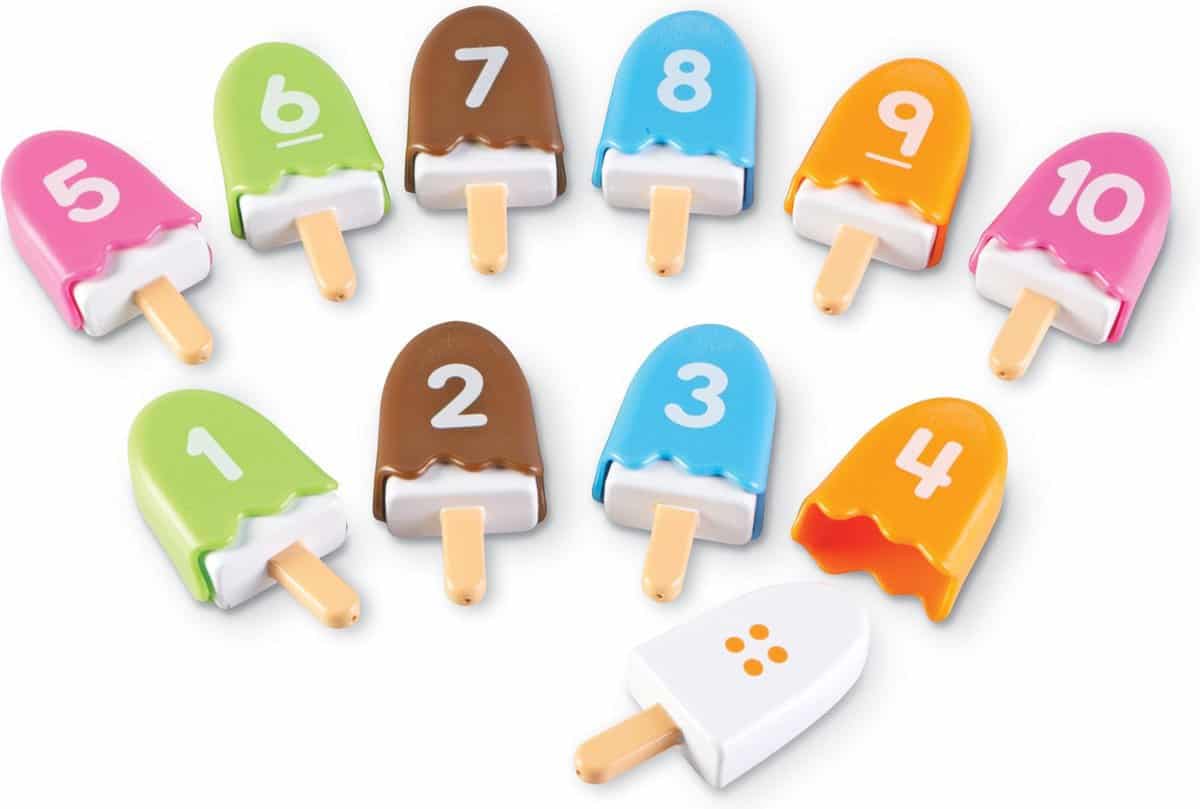Learning from numbers and arithmetic | All milestones from baby to teen + exercise tips & games
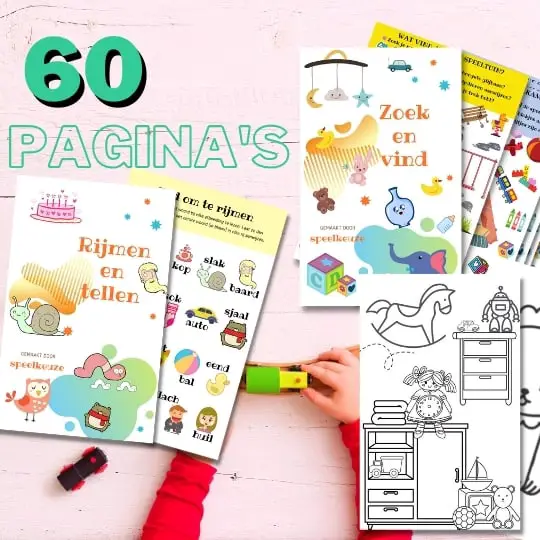
Always something to do for the holidays or rainy day?
Play Choice now has the ultimate activity book collection, with over 60 pages of fun coloring pages and educational puzzles.
Our little ones have a lot to learn, including, of course, numbers and math.
When your baby is about 1 year old, you can only start teaching him a few numbers. Your little one can acoustically recognize a counting word after his first year, but does not understand that it indicates a certain amount.
Only when your child is about two years old will he understand the meaning of the first numbers and quantities a little better. Subsequently, he will become increasingly interested in figures.
Children learn the principle of counting by repeating the numbers. In the beginning, they occasionally forget a number or even spontaneously invent a 'fantasy' number.
Don't be surprised if your child says "three-ten" or "four-ten" instead of "thirteen" or "fourteen"!

In this article, I'll take you through the learning development of numbers and math in children, from baby to teen.
I also give you fun play and practice tips per phase, to assist your child as best as possible in mastering these important skills!
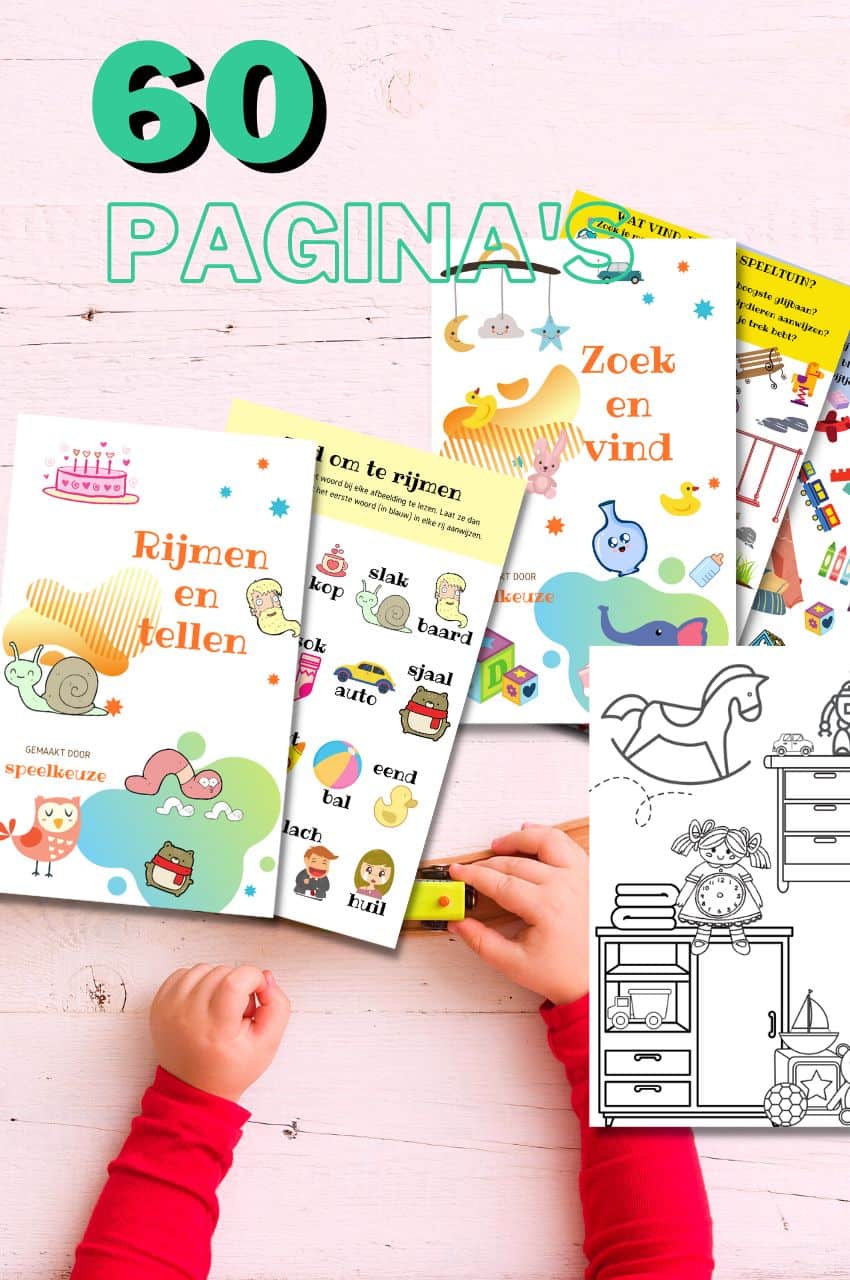
From toddler to toddler activity book collection
Educational games and coloring pages for 3 to 6 years
Your toddler and preschooler will love this e-book, along with the accompanying printables. He or she can play with it at every stage of development, together with mom and dad.
Buy at Bol.comWhat we discuss in this comprehensive post:
- 1 Learning numbers and math – by age
- 1.1 Child of 1 year – stimulate recognition
- 1.2 2-year-old child - a number is an amount
- 1.3 Child of 3 years - say first numbers
- 1.4 Child of 4 years - learning to count and simple calculations
- 1.5 Child of 5 years – increasing awareness and math skills
- 1.6 Child of 6 years – more insight and school tasks
- 1.7 Child 7 years old - learn tables and count to 100
- 1.8 Child of 8 years – fractions, division and telling time
- 1.9 Child of 9 years – estimation of proportions
- 1.10 Child aged 10-11 – complex calculations
- 1.11 Child from 12 to adult - conceptual and abstract thinking
- 2 Conclusion
Learning numbers and math – by age
From a small baby to a “big” teenager, let's see how a child develops the skills to recognize, use numbers and do math.
Child of 1 year – stimulate recognition
Your little one can acoustically recognize a number after his first year, but does not understand that it indicates a quantity. Nevertheless, it is good to encourage recognition here.
Sing counting songs and rhymes together and playfully show your child how to count on your fingers.
With cheerful (count) songs you can introduce your 1- year old to counting and numbers while singing. Consider, for example, the Seven Jump or the paper hat.
At this age, however, you do not have to expect that your child will remember the numbers and be able to reproduce.
There are also really nice books that seriously help with learning numbers and math.
What I really like is a do, feel and audio book, how about the classic Caterpillar Never Enough but in a feel book?
This book has been around for at least half a century and remains great! In this beautiful feel book themes such as numbers, animals, words, shapes and colors are introduced in such a way that they really appeal to your little one.
Your 1 year old child will learn numbers and counting later on with this book.
Also Miffy's first counting book recommended. The number is shown on each page as a digit, as English and as a Dutch word.
I understand that a one-year-old cannot count English, not even Dutch, but there is something to discover and learn in this handy cardboard book for every child, at every level.
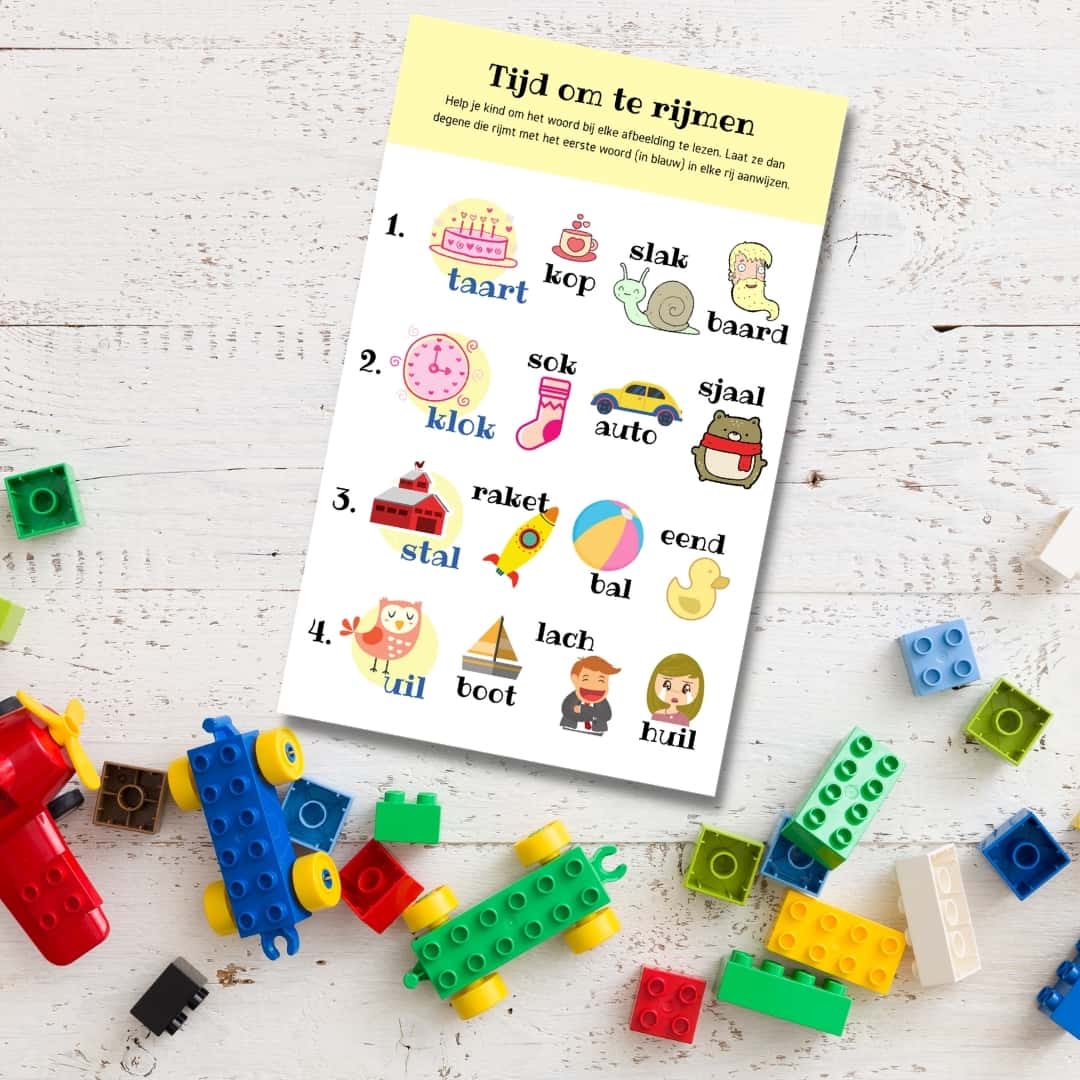
Rhyming & Counting
You train in a playful way: artistic development, concentration, fine motor skills, pattern recognition, creativity. Discover the educational games in our free activity book collection.
2-year-old child - a number is an amount
When children are two years old, they begin to realize that numbers represent quantities.
They have already become acquainted with numbers, for example in books and with listening to and singing (counting) songs, but also through stories.
Around this age, some children already understand that a number stands for a certain amount.
Singing count songs, they remember numbers to the beat of the music, but they don't know how much a number is. Buy an abacus can be a good choice at this age!
Sing a lot of counting songs with your little one and count to five on your fingers and then you count together on his own hand, or on the cozy 'rollercoaster' abacus.
Another fun toy for a 2 year old to help with learning numbers and counting is this number train from DUPLO.
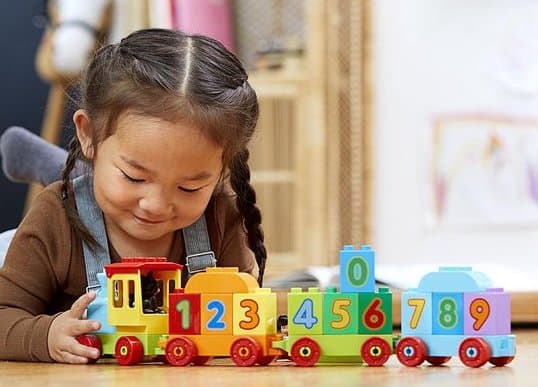
Find an extensive review of this colorful DUPLO train and 5 other great options here!
Child of 3 years - say first numbers
I then take you to the three-year-old, who just starts counting a little 'real'.
A toddler can often say the numbers 1 to 5 because they have this in their head, but he can't quite understand them yet.
It is still quite difficult for him to link these figures to quantities.
Your 3-year-old may be able to associate a number with a small amount, up to about 5, but is not yet good at counting toys one at a time.
Practice counting toys with him and also counting rhymes and songs, counting on your fingers.
Fun toys that can help children of about three years with counting, for example this counting book My first 100 digits. With beautiful bright colors and pictures, the cover is nice and soft for children's fists.
Also this beautiful wooden color puzzle with cute magnet fish will appeal to your little one.
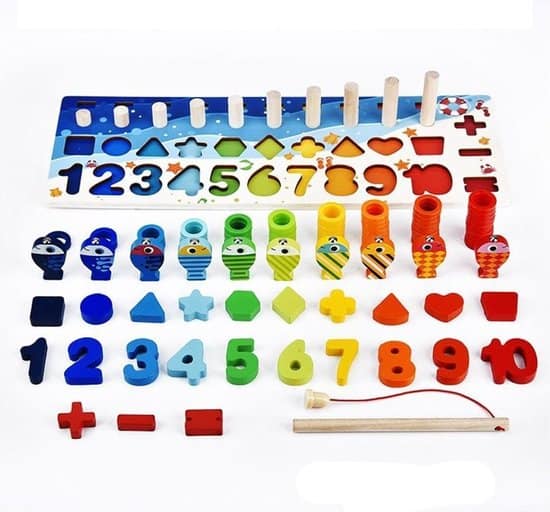
Also check out my post with the best toys to learn colors [+ complete practice guide]
Child of 4 years - learning to count and simple calculations
I'm more than happy to continue telling you about your four-year-old, because all of a sudden your toddler makes quite a leap. He's going to count better and do some math!
The toddler age, a lot of things happen and your little one learns quickly and makes connections: your child already understands the concepts of much & little, more & less, bigger & smaller, add & subtract.
But can your four-year-old already count well?
Your four-year-old child can now count to 10 and also recognize the numbers 1 to 5, he can also recognize groups of 2 and 3 without counting.
Your child can count objects, but of course he sometimes counts an object too much or too little and then doesn't arrive at the right number: the math has started!
The next step for your 4 year old is to come up with ways to make counting easier.
For example, he puts aside the toy he just counted so that he doesn't count it a second time.
Your child learns to recognize and read more and more numbers. There are also very fun games for your four-year-old to encourage counting.
The coloring book dinosaurs coloring with numbers gives your toddler a fun activity, not only does he get to know the numbers well, but for the fine motor skills, this is also a good stimulus.
Best math game for preschoolers
With these colorful ice creams, your toddler will learn numbers and counting from 1 to 10, made of safe plastic.
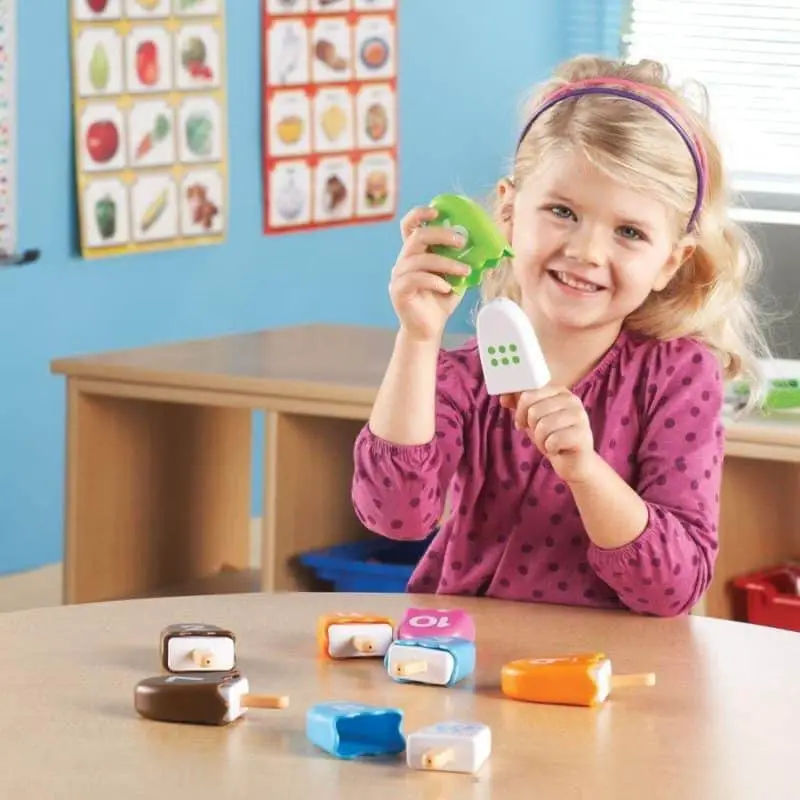
Child of 5 years – increasing awareness and math skills
It is difficult for your five-year-old to focus on more than one factor at a time and ignore other important factors in solving a problem or issue.
He not only has a good sense of the concepts more & less, much & little, in & out, bigger & smaller, thickest & thinnest, in front of, next to & on, but he can also organize and estimate.
Your child can recognize the numbers 1 to 10, count to 20 and sometimes back, but can also compare quantities up to and including 12.
In this phase he can, for example, recognize / estimate groups of 6 without counting.
Addition and subtraction under 12 no longer causes any problems and he recognizes concepts such as length, volume, circumference and weight.
Your 5-year-old child may think that a long narrow glass contains more water than a low, wide glass, because in this case he focuses on the height of the glass and not the width.
Your five-year-old has not yet realized that – in this case – a low glass that looks different from a tall glass can still have the same characteristics.
Counting back from five to one is now easy for your little one. He can point and count objects to ten, and he understands that each object is counted only once.
He understands that when you count, you start at one, and the item you count last represents the total.
The higher the number, the greater the quantity, it also makes sense to them and they just understand the counting system better and better.
With these fun Math Cubes can teach your five-year-old to add and subtract numbers!
This set of 11 activity cards and 100 counting blocks can help your little one practice building, tracing and later writing and maths.
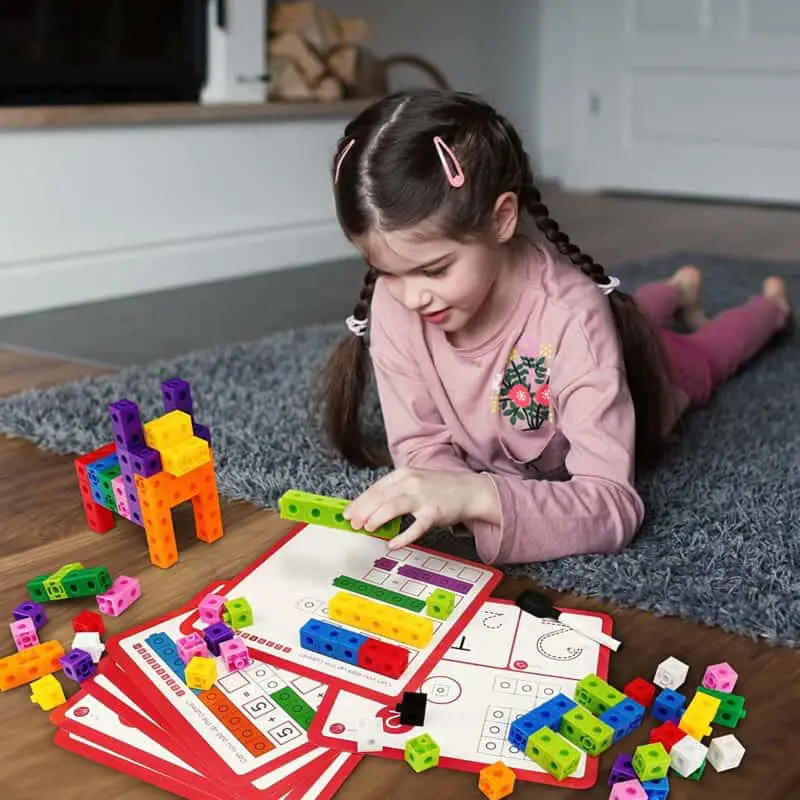
With the Scholastic learning Mats teaches your five-year caller ID and counting, and learns the numbers 1-10!
Place the correct number of fish in the fishbowl. Then you can write down the number! The game comes with 60 fish colors and an activity guide.
Look here for more Educational & safe toys for toddlers: child 4 or 5 years
Child of 6 years – more insight and school tasks
Pointing and counting has continued to grow from ten to twenty, and your child can read written numeric numbers up to nine.
It is possible to do simple calculations up to ten by heart, because they are automated by him, yet he may sometimes need the help of an abacus, and that does not matter.
Your six-year-old can write numbers and understand the symbols plus (+) and minus (-).
Your child can solve sums under 10 and probably also calculate addition and subtraction sums under 20 a little later.
At school he learns to count to 100, but also to double and halve numbers. He can count in steps of 2, 5 or 10 and understands the value of money.
Your child understands well that a long narrow glass can contain as much water as a layer of wide glass, in other words; it has developed its conservation capacity.
Before your child is seven years old, more often than not, he can count from one to two hundred.
Games like monkey balancealthough recommended from 3 to 6 years old, I find much more suitable for XNUMX year olds.
Here's how the game works:
It gives them insight into figures, but also into sizes and weight, a very fun and educational game! Good in preparation for group 4 if you ask me.
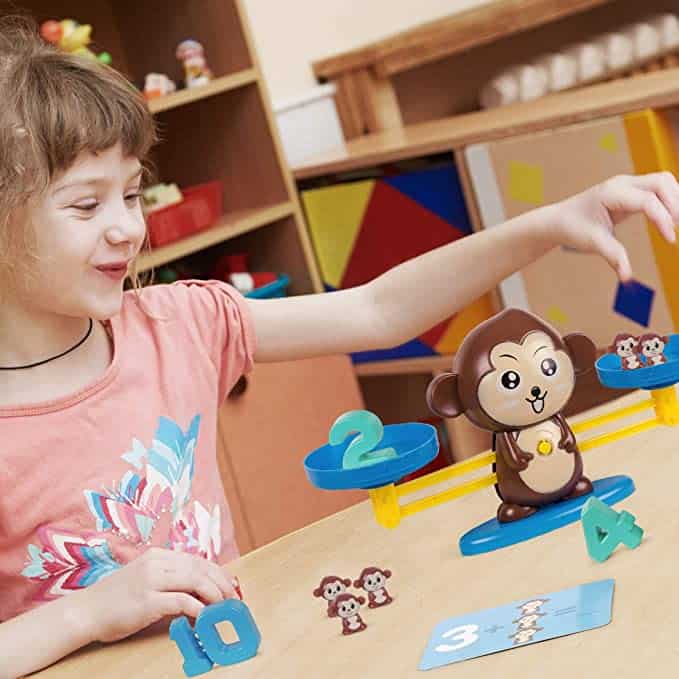
Child 7 years old - learn tables and count to 100
Your seven-year-old is learning to add and subtract up to 100, and sure enough, how well we remember them all: it must be possible to say the tables!
He usually understands tables 1 to 5 and 10.
Your child can solve simple story sums (stories such as “4 children can divide 8 toys among themselves, how many toys does each child get?”).
He can calculate simple calculations up to 20 by heart, because they are automated.
You can ask him for half of 100 or of 50, and he can count in increments of 10; he knows that there are 10 groups of 10 in the number 100.
Furthermore, your seven-year-old will begin to understand measures and weights and show an understanding of calendar dates.
The concepts of centimeter, meter and kilometer are clear to him, but he can sometimes already estimate a length.
Learn to multiply better with this Table Tray with colored wooden blocks to master the tables 1 to 12 perfectly.
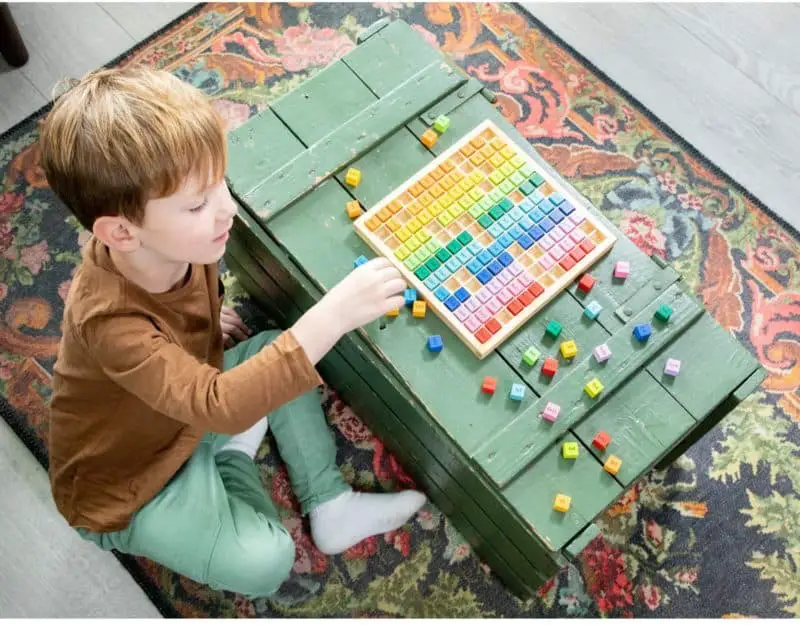
Child of 8 years – fractions, division and telling time
It is getting more and more difficult, that calculation! Your 8-year-old child can now add and subtract with numbers up to 1000.
Your eight-year-old can already memorize the tables from 1 to 10 fairly well, they have now also been automated. But now it comes; the fractures!
Your child will gain insight into fractions such as halves, quarters and thirds, as in dividing a pie or pizza. He understands measures of length, but now also millimeters and decimeters.
Calculating with money is going well and he already has some understanding for amounts after the decimal point. He also learns to deal with not only multiplication, but also division sums.
telling the time on an analog clock works well, he understands the hours and minutes. Now he also learns to tell the time digitally and about the seconds.
With this brain teaser game teaches your child to order numbers and to solve difficult sums in a playful way, also forms are discussed.
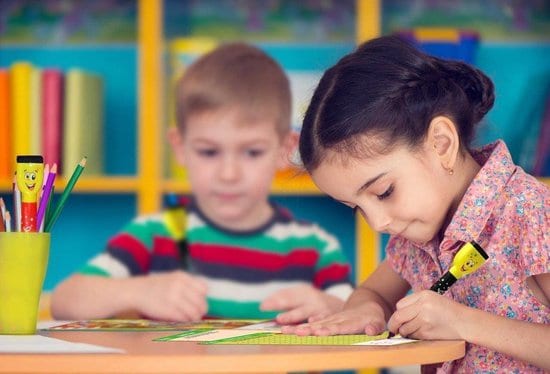
Also read: 10x STEM toys for 7 & 8 years: learn science & technology
Child of 9 years – estimation of proportions
Your nine-year-old understands proportions, think of a car on scale, he can also estimate speed, and he knows what 100 km/h 'feels' like. Your child also understands how much something can cost per piece.
Your 9-year-old child can also tell the time on a digital clock, without any problems.
He can actually calculate up to 10.000 and starts with calculations up to 100.000. He also understands how much a 'million' is and knows that this is a long number with 6 zeros.
He can pay himself, because he can calculate with money, also with amounts after the decimal point.
Your child understands measures of volume, even milliliters and decilitres, and weight; not only the kilos, but also the grams.
He also knows how to calculate the area and the perimeter of a rectangle or square.
His understanding of fractures becomes more and more: besides halves, quarters and thirds, he also understands fifths, eighths, tenths and sixths.
He is already good at doing times and division sums.
This Fractures Tower or equivalent tower is useful for visualizing the relationship between fractions.
Since your nine-year-old is fully engaged in this, he will be happy to use these turrets.
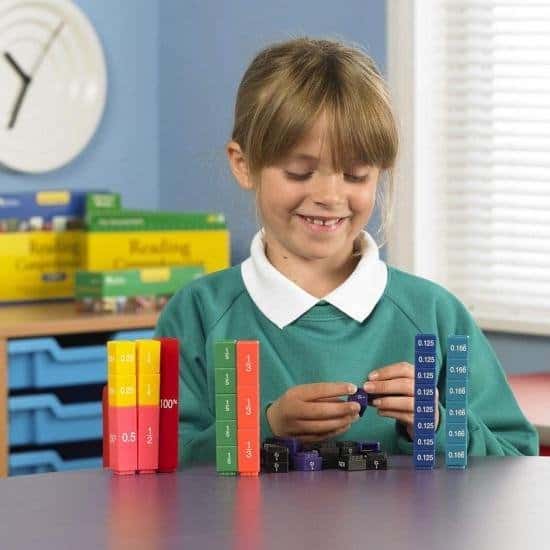
Child aged 10-11 – complex calculations
At this age, your child takes a more realistic approach to life and his naivety diminishes.
Your 10-11 year old child is getting better at dealing with not only fractions, but also percentages, decimal numbers and proportions.
Your ten-year-old or eleven-year-old can now make good guesses: he can sum up decimal numbers and round them.
He can also calculate the volume and area of an object, calculate speed and understand money exchange rates.
He can calculate with numbers up to a million and perhaps even above. He can also read scales well.
Before your child takes action – at this age – he works out issues or problems in his head, which leads to less impulsive behavior.
The Osmo Pizza&Co you play with a physical game that then appears on the screen of your iPad (like this kid-friendly one) appears.
Your child - owner of Pizza & Co here - combines physical game pieces with fun characters on the screen. Customers and suppliers must be dealt with and profit must be madeïbe invested!
Here the game is cheerfully introduced by Osmo:
In addition to improving his math skills, your child will also improve his communication skills.
He must be able to recognize non-verbal communication such as facial and body language of customers, and thus score the best reviews!
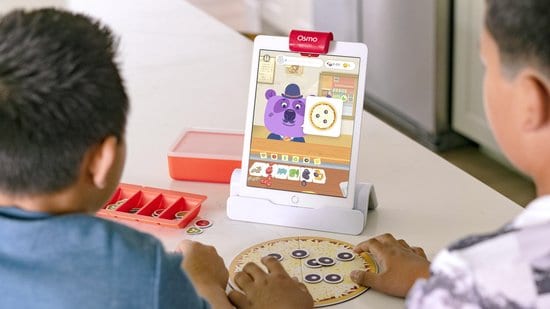
Also read: Manage multiple iPads | Tips for your family
Child from 12 to adult - conceptual and abstract thinking
Moving on now, with the age of twelve to adulthood.
Your 12-year-old child is increasingly able to think both abstractly and complexly.
Solving problems and sums - also with 6 zeros - went well, but now he can deal with specific assumptions.
Your child is perfectly capable of weighing up all factors for himself that may have consequences for the outcome. The same process also takes place in the world of numbers and arithmetic.
After his twelfth birthday he starts thinking about elusive concepts such as truth and, for example, justice. Your child now understands that his own truth can only be one of the possible truths.
A great game for young and old Fortnite Monopoly.
You go into battle with opponents and you avoid the storm to survive.
The game is inspired by the video game Fortnite, but there is a 'calculation factor' in this game – otherwise it wouldn't be Monopoly – instead of Monopoly money players earn Health Points (HP).
If you can't avoid the storm, you lose HP. Just like in the video game, the last player standing wins!
Find even more here beautiful board games reviewed with explanation + video
Conclusion
As a parent / educator you naturally play a major role in the development of your child; this also applies to learning to count.
In addition to teaching a young child to count with the help of books, songs and videos, your child can guide and help count in everyday situations.
Count the steps when climbing stairs and when shopping, ask your child to help and put a certain amount of apples in a bag, for example.
Along the way, count out loud the trucks that pass by, or the blue cars. Play often math games with your child and make it more difficult, you will see that it does a lot!
However, every child develops in his own way, which is something that you should always remember as a parent.
Also read: Your child wants to learn to imitate you (and how you can help them grow up)

Always something to do for the holidays or rainy day?
Play Choice now has the ultimate activity book collection, with over 60 pages of fun coloring pages and educational puzzles.
Joost Nusselder, the founder of Speelkeuze.nl is a content marketer, father and loves trying out new toys. As a child he came into contact with everything related to games when his mother started the Tinnen Soldaat in Ede. Now he and his team create helpful blog articles to help loyal readers with fun play ideas.
